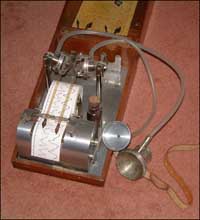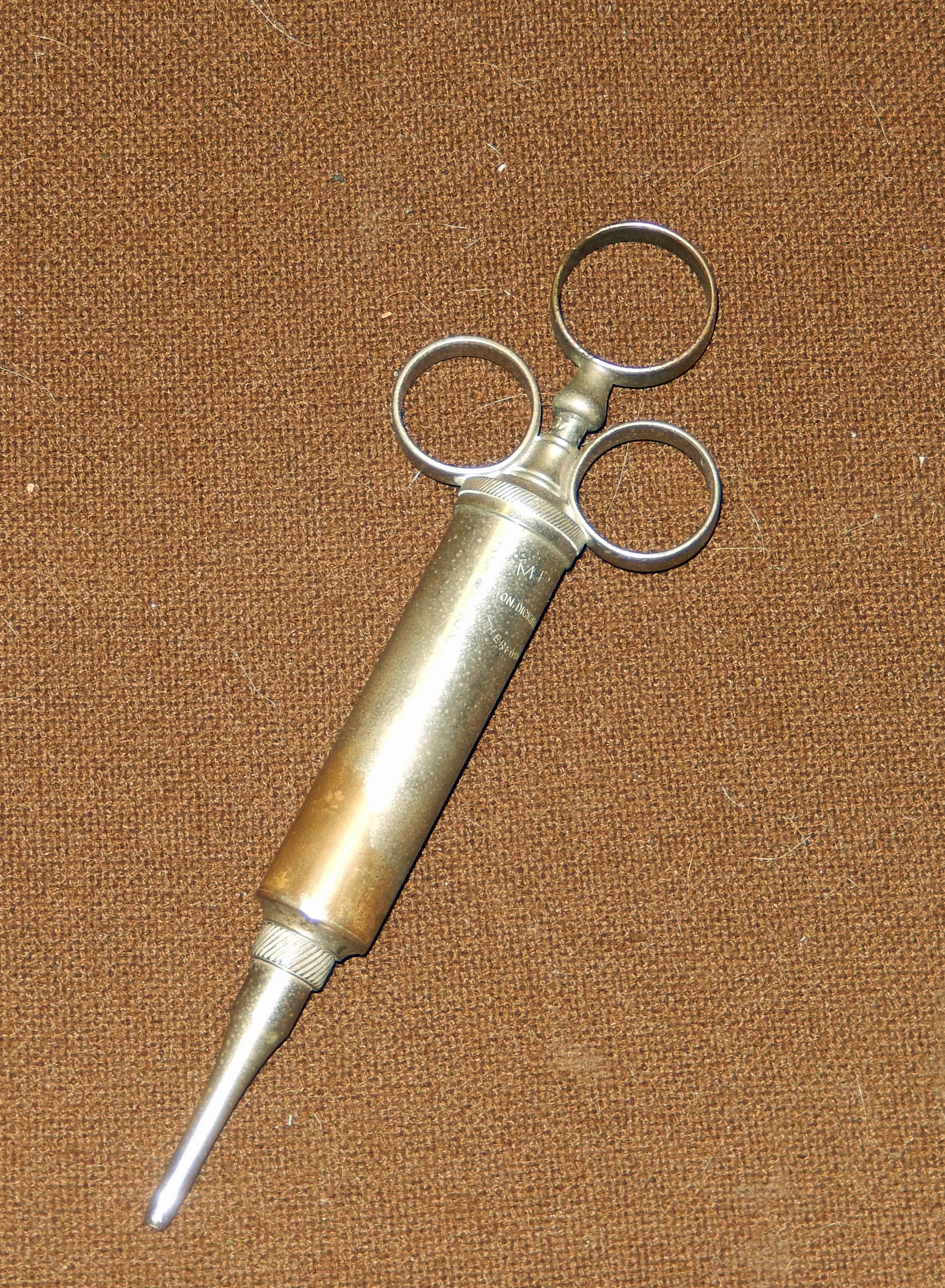There are periods in American history when scientific progress is in sync with governmental resolve to exploit that progress. This was the case in the early 1960s, when advances in vaccine development were matched by the Kennedy Administration’s efforts to vaccinate the nation and improve the public’s health. And the American public wholeheartedly supported both the emerging generation of vaccines and the government’s resolve to place them in the hands – or rather arms – of as many Americans as possible. The Vaccination Assistance Act of 1962 grew out of this three-pronged synchrony.[1]
Between 1963 and 1965, a severe outbreak of rubella (German measles) lent support to those urging Congress to approve title XIX (of the Medicaid provision) of the Social Security Act of 1965. And Congress rose to the task, passing into law the “Early and Periodic Screening, Diagnosis, and Treatment” amendments to Title XIX. The latter affirmed the right of every American child to receive comprehensive pediatric care, including vaccination.
The timing was auspicious. In 1963, Merck, Sharp & Dohme began shipping its live-virus measles vaccine, trademarked Rubeovax, which had to be administered with standardized immune globulin (Gammagee). In 1967 MSD combined the measles vaccine with smallpox vaccine as Dryvax, and then, a year later, released a more attenuated live measles vaccine (Attenuvax) that did not require coadministration of immune globulin.[2] MSD marketing reminded parents that mumps, long regarded as a benign childhood illness, was now associated with adult sterility. It too bowed to science and responsible parenting, with its incident among American children falling 98% between 1968 and 1985.

Creator: CDC/Mr. Stafford Sm
America’s commitment to vaccination was born of the triumphs of American medicine during WWII and came to fruition in the early 1950s, just as Cold War fears of nuclear war gripped the nation and pervaded everyday life. Grade school nuclear attack drills, “duck and cover” animations, basement fallout shelters with cabinets filled with canned food – I remember all too well these scary artifacts of a 1950s childhood. Competition with the Soviet Union suffused all manner of scientific, technological, public health-related, and athletic endeavor. The Soviets leapt ahead in the space race with the launching of Sputnik in 1957. The U.S. retained an enormous advantage on the ground with the size and destructive power of its nuclear arsenal.
Less well known is that, in the matter of mass polio vaccination, countries in the Eastern Bloc – Hungary, Czechoslovakia, Poland – led the way. Hungary’s intensive annual vaccination campaigns, launched in 1957 with Salk vaccine imported from the U.S. and Sabin vaccine imported from the U.S.S.R. in 1959, was the prototype for the World Health Organization’s (WHO) global strategy of polio eradication. Czechoslovakia became the first nation to eradicate polio in 1959; Hungary followed in 1963.[3]
It is tempting to absorb the narrative of polio eradication into Cold War politics, especially the rhetoric of the vaccination campaigns that mobilized the public. Throughout the Eastern Bloc, mass vaccination was an aspect of pro-natalist policies seeking to increase live births, healthy children, and, a bit down the road, productive workers. Eradication of polio, in the idiom of the time, subserved the reproduction of labor. In the U.S., the strategic implications of mass vaccination were framed differently. During the late 50s and early 60s, one in five American applicants for military service was found medically unfit. Increasing vaccination rates was a cost-effective way of rendering more young men fit to serve their nation.[4]
But there is a larger story that subsumes these Cold War rationales, and it is a story, surprisingly, of scientific cooperation across the Iron Curtain. Amid escalating Cold War tensions, the United States and Soviet Union undertook a joint initiative, largely clandestine, to develop, test, and manufacture life-saving vaccines. The story begins in 1956, when the U.S. State Department and Soviet Ministry of Foreign Affairs jointly facilitated collaboration between Albert Sabin and two leading Soviet virologists, Mikhail Chumakov and Anatoli Smorodintsev. Their shared goal was the manufacture of Sabin’s oral polio vaccine on a scale sufficient for large-scale testing in the Soviet Union. With a KGB operative in tow, the Russians travelled to Sabin’s laboratory in the Cincinnati Children’s Hospital, and Sabin in turn flew to Moscow to continue the brainstorming.
Two years later, shipments of Sabin’s polio virus strains, packed in dry ice, arrived in the Soviet Union, and shortly thereafter, with the blessing of post-Stalin Kremlin leadership, the mass trials began. The Sabin vaccine was given to 10 million Russian school children, followed by millions of young adults. A WHO observer, the American virologist Dorothy Horstmann, attested to the safety of the trials and the validity of their findings. It has long since stopped polio transmission everywhere in the world except Afghanistan and Pakistan.
No sooner was the Sabin live-virus vaccine licensed than Soviet scientists developed a unique process for preserving smallpox vaccine in harsh environments. With freeze-dried vaccine now available, Viktor Zhdanov, a Soviet virologist and Deputy Minister of Health, boldly proposed to the 1958 meeting of the World Health Assembly, WHO’s governing body, the feasibility of global smallpox eradication. After the meeting, he did not wait patiently for the WHO to act: he led campaigns both to produce smallpox vaccine and to solicit donations from around the world.[5] His American colleague-in-arms in promoting freeze-dried vaccine was the public health physician and epidemiologist Donald Henderson, who led a 10-year international vaccination campaign that eliminated smallpox by 1977.[6]
What can we learn from our Cold War predecessors? The lesson is self-evident: we learn from them that science in the service of public health can be an enclave of consensus, what Dora Vargha, the historian of Cold War epidemics, terms a “safe space,” among ideological combatants with the military resources to destroy one another. The Cold War is long gone, so the safe space of which Vargha writes is no longer between geopolitical rivals with fingers on nuclear triggers.
But America in 2021 is no longer a cohesive national community. Rather, we inhabit a fractured national landscape that erupts, with demoralizing frequency, into a sociopolitical battle zone. The geopolitical war zone is gone, but Cold War-type tensions play out in the present. Right-wing extremists, anti- science Evangelicals, purveyors of a Trump-like notion of insular “greatness” – these overlapping segments of the population increasingly pit themselves against the rest of us: most Democrats, liberals, immigrants, refugees, defenders of the social welfare state that took shape after the Second World War. Their refusal to receive Covid-19 vaccination is absorbed into a web of breezy rhetoric: that they’ll be okay, that the virus isn’t so bad, that the vaccines aren’t safe, that they come to us from Big Government, which always gets it wrong. Any and all of the above. In fact, the scientific illiterati are led by their anger, and the anger shields them from relevant knowledge – of previous pandemics, of the nature of a virus, of the human immune system, of the role of antibodies in protecting us from invading antigens, of the action of vaccines on blood chemistry – that would lead them to sequester their beliefs and get vaccinated.
When the last wave of antivaccinationism washed across these shores in the early 1980s, it was led by social activists who misappropriated vaccination in support of their cause. Second-wave feminists saw vaccination as part of the patriarchal structure of American medicine, and urged women to be skeptical about vaccinating their children, citing the possibility of reactions to measles vaccine among children allergic to eggs. It was a classic instance of throwing out the baby with the bathwater which, in this case, meant putting the children at risk because the bathwater reeked of male hubris. Not to be left out of the antiscientific fray, environmentalists, in an act of stupefying illogic, deemed vaccines an environmental pollutant – and one, according to writers such as Harris Coulter, associated with psychiatric illness.[7]
Matters are now much worse. Antivaccinationism is no longer aligned, however misguidedly, with a worthy social cause. Rather, it has been absorbed into this far-reaching skepticism about government which, according to many right-wing commentators and their minions, intrudes in our lives, manipulates us, constrains our freedom of choice, and uses our tax dollars to fund liberal causes.
Even in the absence of outright hostility, there is a prideful indifference to vaccination, partly because it is a directive from Big Government, acting in conformity with the directive of what is, after all, Big Pharmaceutical Science. But we have always needed Big Government and Big Science to devise solutions to Big Problems, such as a global pandemic that has already claimed over 560,000 American lives. Without American Big Government, in cooperation with British Big Government, overseeing the manufacture and distribution of penicillin among collaborating pharmaceutical firms, the miracle drug would not have been available in time for D-Day. Big government made it happen. A decade later, the need for international cooperation transcended the bonds of wartime allies. It penetrated the Iron Curtain in the wake of global polio and smallpox epidemics that began in 1952 and continued throughout the decade.
The last thing we need now is a reprise on that era’s McCarthyism, when anyone was tainted, if not blacklisted, by mere accusation of contact with communists or communism. That is, we do not need a nation in which, for part of the population, anything bearing the stamp of Big Government is suspected of being a deception that infringes on some Trumpian-Hobbesian notion of “freedom” in a state of (market-driven) nature.
If you want to make America “great” again, then start by making Americans healthy again. Throughout the 1960s, the imperative of vaccination overcame the anxieties of American and Soviet officials given to eying one another warily atop growing nuclear stockpiles. They brought the scientists together, and the result was the mass testing that led to the eradication of polio. Then America rallied around the Soviet creation of freeze-dried smallpox vaccine, and largely funded the manufacture and distribution that resulted in the eradication of smallpox.
Now things are better. We live in an era in which science enables us to alter the course of a global pandemic. It is time for antivaccinationists to embrace the science, indeed, to celebrate the science and the gifted scientists whose grasp of it enabled them to create safe and effective Covid-19 vaccines in astonishingly little time. You’ve got to get your vaccine. It’s the only way.
[1] Elena Comis, Vaccine Nation: America’s Changing Relationship with Immunization (Chicago: University of Chicago Press, 2014), 20.
[2] Louis Galambos, with Jane Eliot Sewell, Networks of Innovation: Vaccine Development at Merck, Sharp & Dohme, and Mulford, 1895-1995.Cambridge: Cambridge University Press, 1995, 96-98, 196-107.
[3] Dora Vargha, “Between East and West: Polio Vaccination Across the Iron Curtain in Cold War Hungary,” Butt. Hist. Med., 88:319-345, 2014; Dora Vargha, “Vaccination and the Communist State,” in The Politics of Vaccination (online pub date: March 2017).
[4] Comis, Vaccine Nation, 27.
[5] Manela E. “A Pox on Your Narrative: Writing Disease Control into Cold War History,” Diplomatic History, 34:299-323, 2010.
[6] Peter J. Hotez, “Vaccine Diplomacy: Historical Perspective and Future Directions,” PLoS Neglected Trop. Dis. 8:e380810.1371, 2014; Peter J. Hotez, “Russian-United States Vaccine Science: Preserving the Legacy,” PLoS Neglected Trop. Dis., 11:e0005320,2017.
[7] The feminist and environmentalist antivaccination movements of the 1980s are reviewed at length, in Comis, Vaccine Nation, chapter 5 & 6.
Copyright © 2021 by Paul E. Stepansky. All rights reserved. The author kindly requests that educators using his blog essays in courses and seminars let him know via info[at]keynote-books.com.







